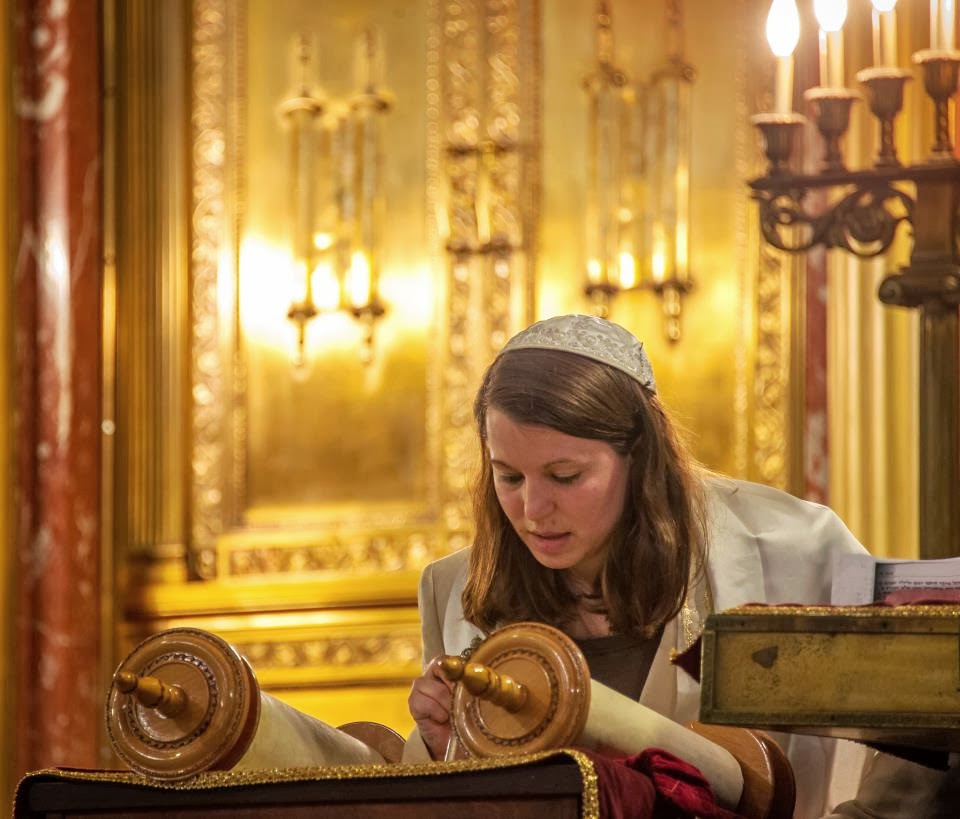Thank you all so much for welcoming me here to your kehillah, and
for coming tonight to services. There are lots of ways to mark the new year,
and being in a sanctuary is only one of them. As we dip our toes into the new
year, I invite you now to think, really think about what will be different in
5775. You’ve all just started a new
school year. How is being a freshman in college different from being a senior
in high school? How is being a senior in college different from being a junior?
Does it feel significant that the Jewish new year coincides with the academic?
How does this moment feel different from January 1st?
Tomorrow we will read the story of Isaac’s birth, and on Friday we
will read of his near-death, but in some traditions, the Akidah is read on the
first day and the story of creation is read on the second day. The creation
story starts with the darkness, just like our holidays. After God creates light
merely by saying, “Let there be light,” the Torah says, and there was evening,
and there was morning, a first day. It is based upon this that the Jewish holidays
start with evening, and consider the “day” sunset to sunset. In many ways, it
feels so fitting for our new year to be in autumn for this same reason. The
days are starting to get dark and cold, it feels like the year’s twilight
hours. Soon it will be winter, utter darkness, and then spring, dawn, and
summer, full day. There was evening and there was morning, a first year. Of
course, this is coincidence that only works if you live in the right climate
and hemisphere. The Torah tells us what day to celebrate Rosh HaShana, and it
has nothing to do with the season, really.
Regardless of the accident of this timeliness, it does give us a
chance to think. What is the darkness that is coming in winter? What can we
create out of it? The Sefer Yetzira, an ancient and densely confusing book of
Jewish mysticism teaches that all of creation exists in the Aleph-Bet if you
just know how to put the letters together right. God of course knows, and that
is why “Let there be light” is enough to begin the creation of the whole world.
Humans do not really know, but they can learn. The myths of golems and such
come from this mystic tradition; they teach us that while magic and divination
is not allowed, Jews can possess their own magic to create great things, but
only if they really apply themselves. It is not an easy task, and may feel like
months of darkness before light and positive results of all that hard work. Not
just anyone can call a golem into being. It comes only after deep study and
meditation and understanding of what it means to create.
This is important for the People of the Book. Jews may be
carpenters, or bankers, or computer scientists by trade, but in essence, we are
people who study. Especially here in this room, as students, we are really all
people who study! We love words, we rely on them to teach us, we rely on them
to pray and commune with God; our aleph bet is dear and holy, we don’t discard
it to keep up with the changing times of language. We honor letters and words
and language. The idea that the key to the universe is locked in these letters
is important for us. It lets us know that by studying and reading and writing,
we are looking, seeing, understanding, and probing, as the Sefer Yetzira says
we should. Once we are able to read a certain level of understanding and
wisdom, we, too, can learn to engrave and carve, to create with our words, as
God does. After all, we are created in the Divine image. We need only apply
ourselves. This season, as we pass into 5775 and a new academic year, I challenge
you all to learn something completely new, and to strive for creativity in your
field. And may you find creation in your own hands.

No comments:
Post a Comment